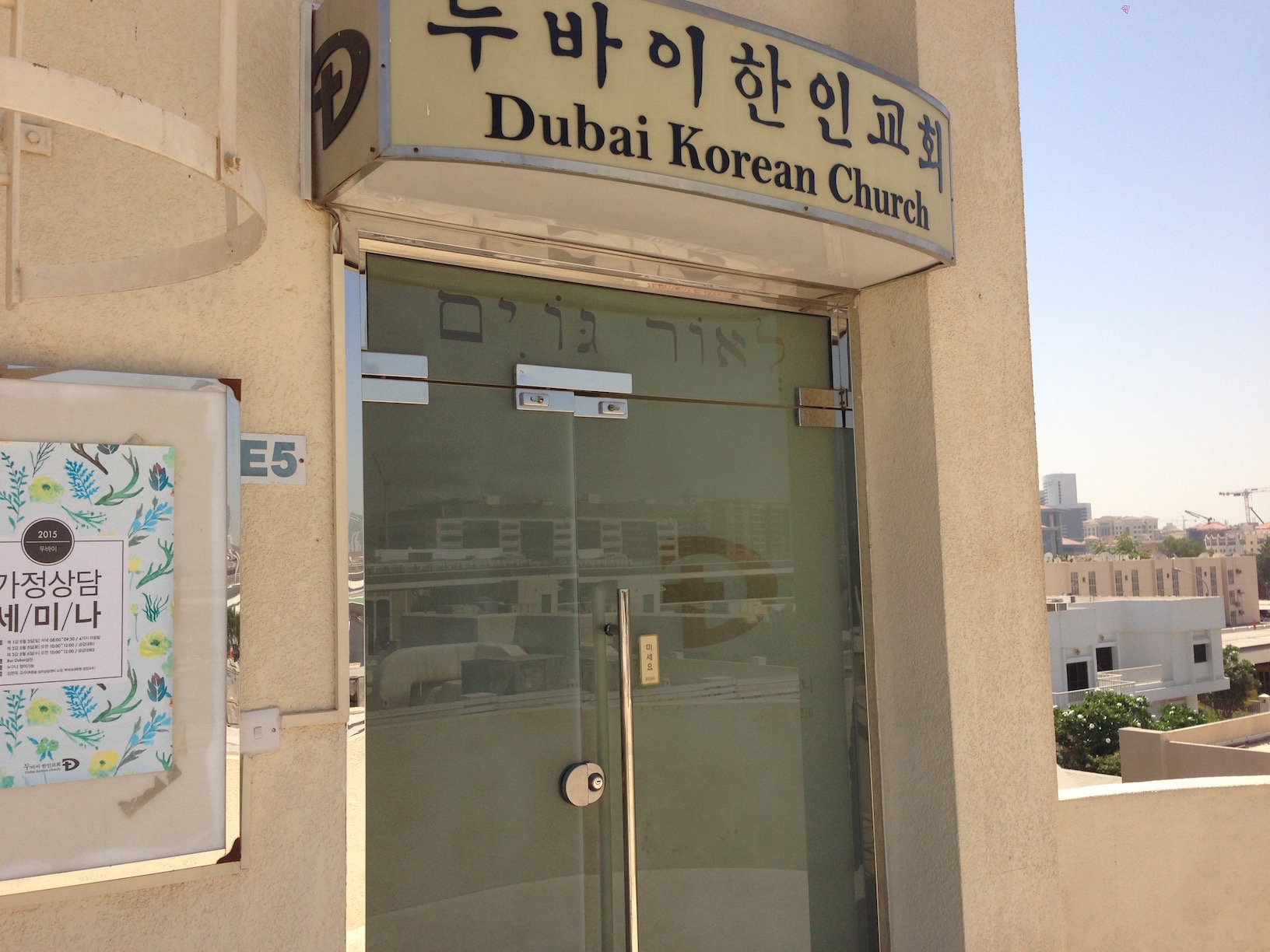 When I knew I would be stopping over in Dubai on a recent trip, I began casting around for story ideas. I wouldn’t be there long. Food? No, kind of done it. Old Dubai? Well, maybe, but what, on a short trip? I’d never yet made it to the Hindu temple which I knew stood just back from the Creek in the Bur Dubai souk – and that set me thinking about religious tolerance. At some point I started googling churches.
When I knew I would be stopping over in Dubai on a recent trip, I began casting around for story ideas. I wouldn’t be there long. Food? No, kind of done it. Old Dubai? Well, maybe, but what, on a short trip? I’d never yet made it to the Hindu temple which I knew stood just back from the Creek in the Bur Dubai souk – and that set me thinking about religious tolerance. At some point I started googling churches.
This was the result, a (necessarily short) story for the BBC’s From Our Own Correspondent – the radio version is here (my bit starts at 11’30”), and the transcript was published by the BBC News magazine here. Please do go and have a quick read.
BBC Arabic made their own translation here.
Of course, there was tons more I couldn’t fit in. Vast numbers of people attend Dubai’s tiny Hindu temple, only a few tens of metres square, in a constant in-and-out flow – “not less than 25,000” every Friday, I was told, with big occasions attracting as many as 100,000 people in a day. I chatted a little to one of the caretakers about Sheikh Rashid, who allowed the temple to be built in 1958. “He believed in Indians,” the caretaker told me. A lovely line.
Father Lennie at St Mary’s Catholic Church, who kindly saw me at a few minutes’ notice on a busy Thursday evening, talked freely about his “floating population” of parishioners, most from India and the Philippines. “People don’t belong here [but] they have very strong faith,” he said, adding: “They may not be as faithful back home” – which I thought was fascinating, and insightful.
“This is a life of triangle,” he said. “Home, work, church.” I wondered how people, particularly South Asians and Filipinos, at the bottom of the UAE’s social heap, cope with the uncertainties, anxieties and insecurities of living as expats in Dubai. “Maybe it leads people to be more spiritual,” he said. I don’t know about degrees, but the passionate expressions of religious fervour I saw at St Mary’s, and at Holy Trinity during the many services I observed, suggests he is on the money.
Father Lennie told me many Muslim people – from Pakistan, India, Sri Lanka and Bangladesh – come to him for conversion, but because of the UAE’s strict laws on proselytisation, he sends them away, telling them to go back to their own country to be converted there.
I wondered how someone in Dubai could be identified as a Catholic, with the prohibition on public displays of religious imagery (other than Islamic). Father Lennie told me to look at people’s rear-view mirrors. A rosary draped over the mirror shows the driver to be a Catholic, apparently. How you tell a rosary apart from a misbaha (a.k.a. subha) – Muslim prayer beads – at distance, on a sunny day, in the dust of Dubai, I have no idea.
There were so many more details. In the Coptic church, I noticed how the prayers that were being chanted in Coptic were simultaneously being flashed up on big screens, both in Arabic and (a detail which dropped out of my published piece) in Coptic that had been transliterated using Arabic letters. After it had been explained to me that the lines I couldn’t read were Coptic transliteration, I wondered why both were needed. A woman at the back of the church, who was preparing sandwich lunches for the congregation, told me. The young generation can no longer read Coptic – they understand the spoken language, but are no longer taught the letters. So the church authorities wanted them not only to grasp the meaning of the prayers (in their first language, Arabic) but also to be able to speak the words too.
It’s a device I’ve seen used by other religious congregations finding mechanisms to cope with assimilation. Reform or Progressive Jewish prayer-books will often have key Hebrew prayers translated into English and also transliterated into English syllables, so that people can chant along with the prayers in the original language. I’ve seen Progressive Haggadot – a Haggadah is the Jewish prayer-book used at the Passover ‘Seder’ meal – without a word of Hebrew, all in English translation and transliteration.
The same in Islam, and, I suspect, many other religions.
Any thoughts and insights, please do share them in the comments below. A final question: is this the only example of Hebrew script on (semi-) public display in the UAE? The Korean church isn’t exactly on the street: it stands within the guarded compound of Holy Trinity. But above its external door is a phrase in biblical Hebrew referring to “a light unto the nations” – not uncommon in Protestant churches. I don’t remember seeing Hebrew anywhere else in the Gulf, now I think of it.
.
.

